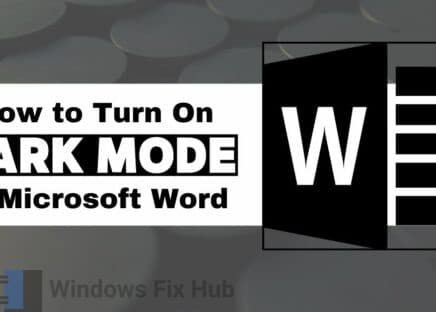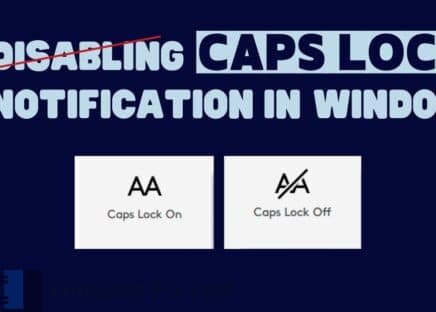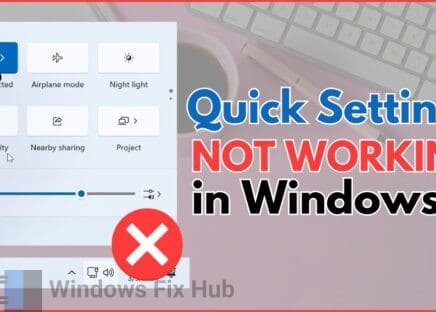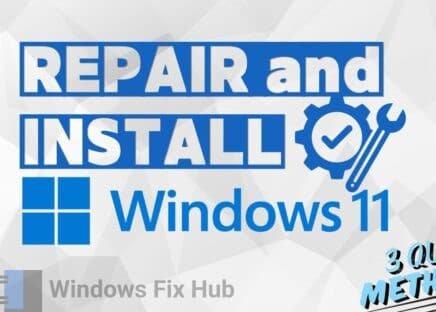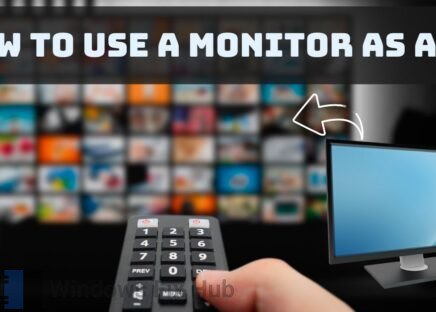Fix all your PC errors with FREE Advanced SystemCare app & enhance your online security.
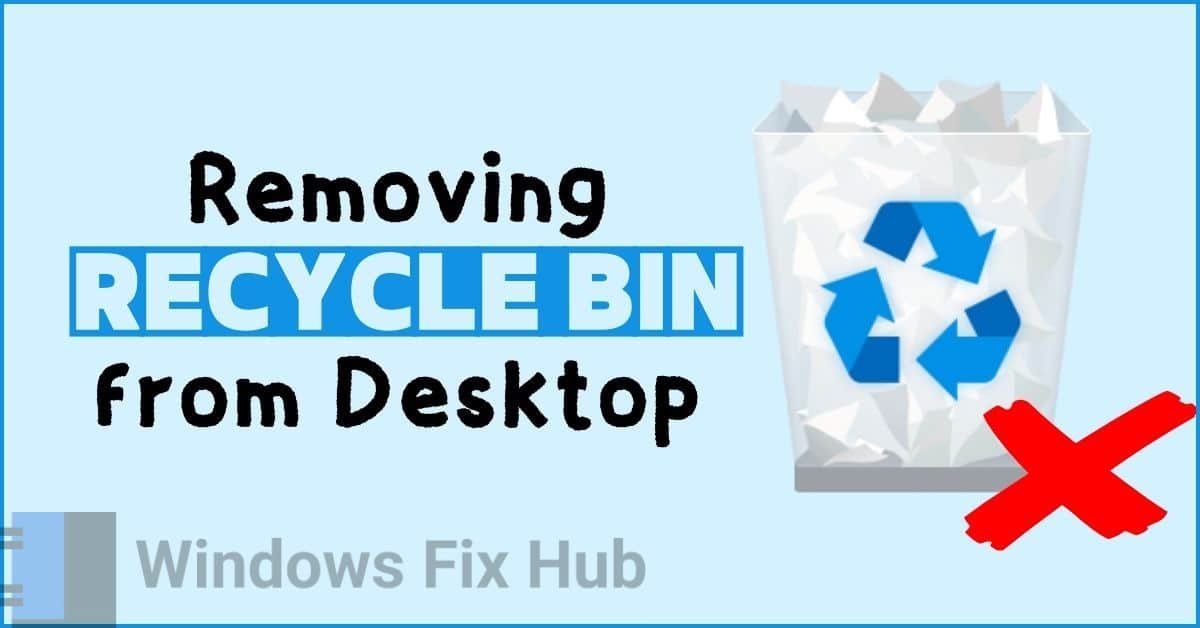
From the beginning of Windows, there has been the Recycle Bin, a little container for previously removed data. Not everyone thinks it’s pretty or needs it, even if it’s functional.
One of the main reasons why users want to remove it is to have a less cluttered desktop, which is understandable. We also encourage you to explore removing the Recommended section from your Windows in case you’re interested. And if you’re having difficulties removing files with long names — see this guide.
Now… a neater and more streamlined desktop experience is yours for the taking with Windows’ built-in option to hide the Recycle Bin. Let’s see how you can remove the Recycle bin from your desktop efficiently.
TRY IT NOW: How do I delete the
Recycle Bin icon off my desktop?
- Confirm the Desktop Icon Preferences
Start by selecting an empty spot on your desktop using the right mouse button. When you do this, a context menu with several choices will appear. Find the “Personalize” menu item and press it to access the Personalization preferences. - Personalize Desktop Icons
You may modify several aspects of your desktop experience via the Personalization settings box. Find the “Themes” menu and then choose “Desktop icon settings.” To change the desktop icons, click on this. A new window will pop up. - Deactivate the Recycle Bin
You can find the Recycle Bin and other accessible desktop icons in the Desktop Icon Settings box. Just deselect the box adjacent to the Recycle Bin symbol to delete it. You may prevent Windows from showing the Recycle Bin symbol on your desktop by doing this.
3 Alternative Ways to Remove the Recycle Bin From Desktop
Let’s have a look at the alternative and move advanced ways you can use to finally remove the unwanted recycle bin icon from your PC!
1. Use Registry Editor to Remove It
The “Registry Editor”, a robust Windows application for complex system adjustments, is used in this method. At the system level, users may access particular registry entries linked to desktop icons and change the visibility of the Recycle Bin icon. The Recycle Bin icon may be permanently removed from the desktop by deleting the corresponding registry entry. Users should be cautious while editing the registry to prevent accidentally changing anything important or causing the system to crash. Get down to business:
- To launch the “Run” dialog box, use the ‘Windows key + R’. To open the “Registry Editor”, type “regedit” and hit ‘Enter’. Be very careful not to accidentally alter any important system settings in the registry.
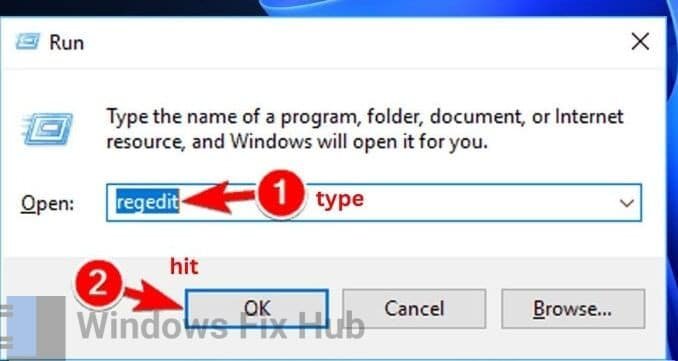
- Go to the location: HKEY_LOCAL_MACHINE\SOFTWARE\Microsoft\Windows\CurrentVersion\Explorer\Desktop\NameSpace.
- Find the key: 645FF040-5081-101B-9F08-00AA002F954E, right click then click “Delete”.
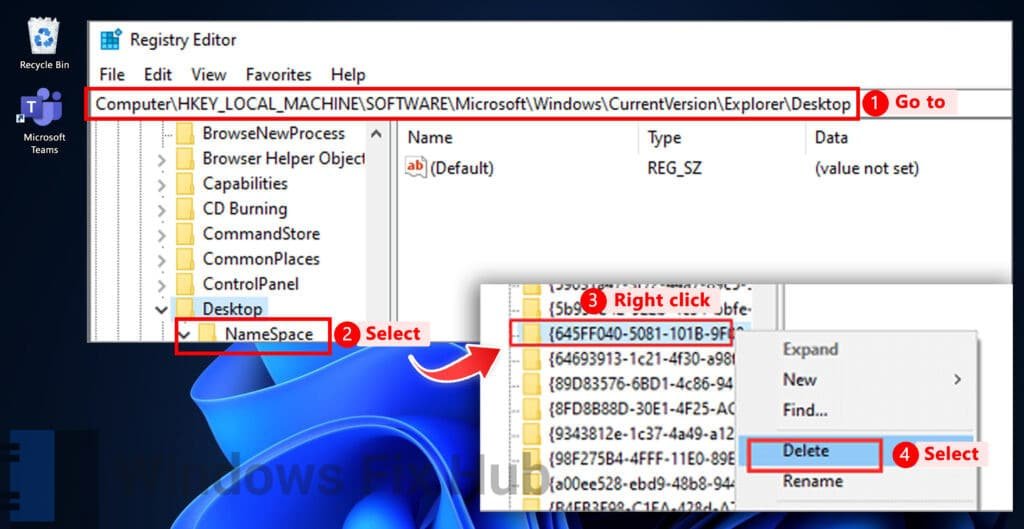
2. Activate the Group Policy Editor
For administrators in charge of several machines on a network, the “Group Policy Editor” provides a centralized solution for controlling Windows environment settings and configurations. All user accounts on a system may have the Recycle Bin icon removed from the desktop if the correct policy is enabled. This solution offers a consistent and scalable option when it comes to personalizing desktop environments in business settings. Just follow these steps to fix your problem:
- Find “Desktop” under “User Configuration” > “Administrative Templates” in the “Group Policy Editor” box. Policies about desktop settings are available for configuration here.
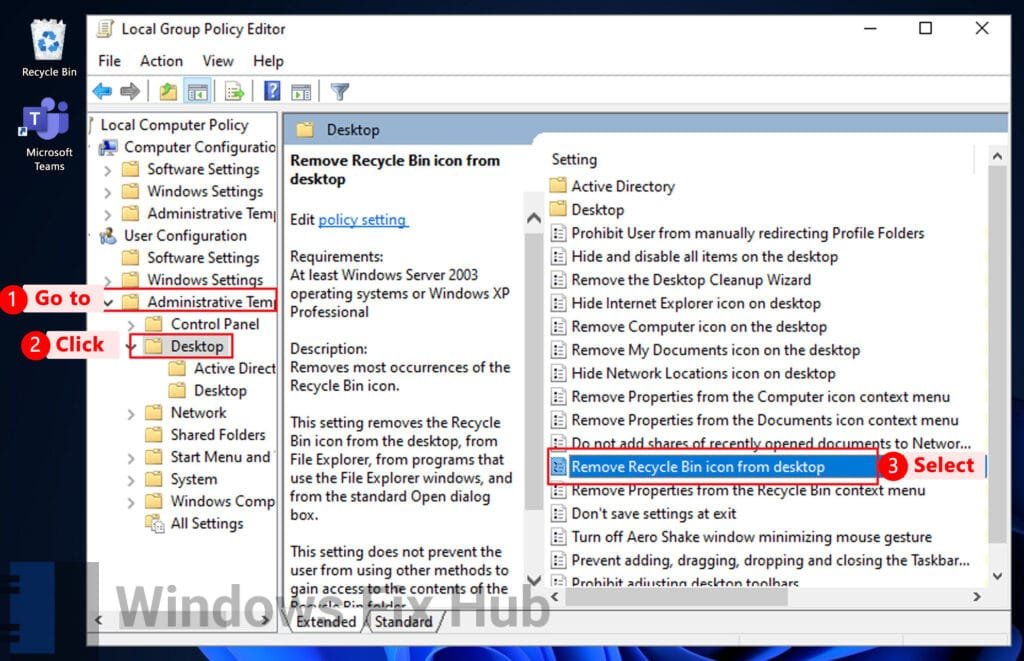
3. Executing Special Commands from the Terminal to Remove Recycle Bin
This method alters the desktop icon settings by interacting with the Windows registry using Command Prompt. Users can remove the Recycle Bin icon from the registry by using the “Command Prompt” interface and a particular command. For those who want a more text-based interface or who need to automate the removal procedure on several platforms, this method provides a command-line option. Users should be careful while using Command Prompt to execute commands since doing so incorrectly might lead to system issues or data loss. What should you do?
- Get the Command Prompt as an Administrator started first
Find “cmd” in the ‘Start’ menu, click, and choose “Run as administrator” to launch Command Prompt with administrative rights. Ensure you have the right permissions to make modifications to the system.
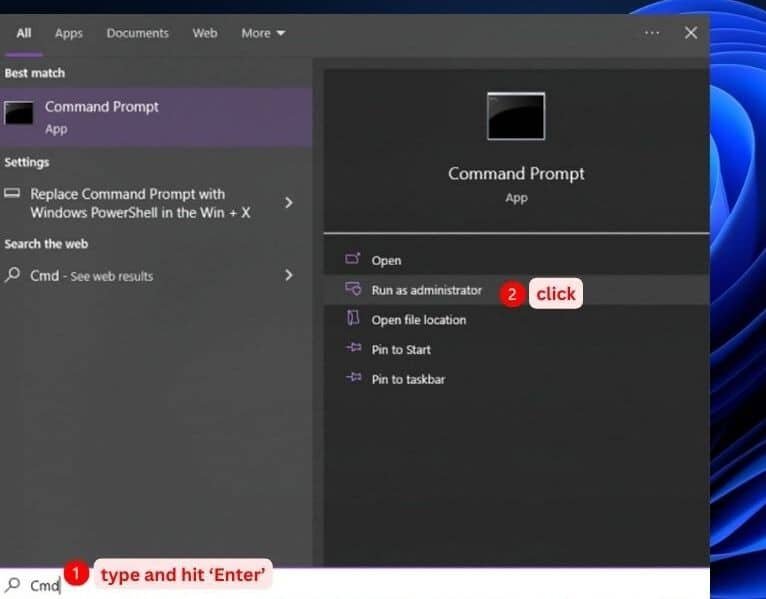
- Run the command to modify the registry
Put this command into the “Command Prompt” and hit ‘Enter’:reg delete HKLM\SOFTWARE\Microsoft\Windows\CurrentVersion\Explorer\MyComputer\NameSpace\{645FF040-5081-101B-9F08-00AA002F954E} /f
By using this command, you may remove the Recycle Bin icon’s related registry key.
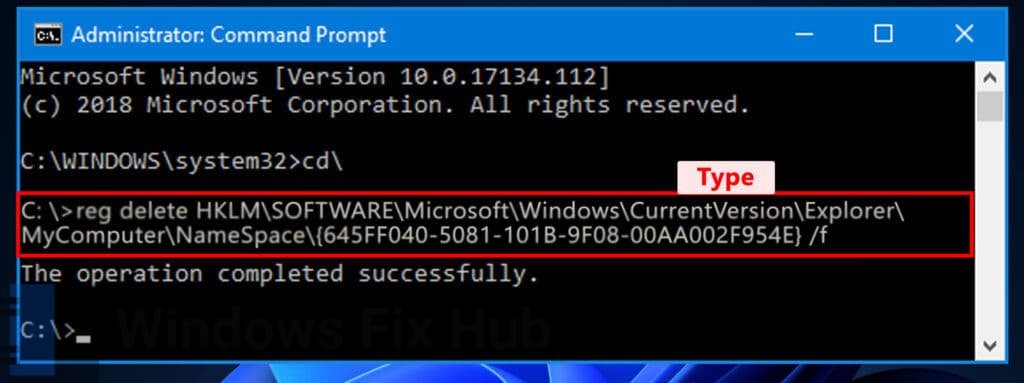
- Launch ‘Explorer’ again
Restarting Windows Explorer is necessary to implement the changes. Press ‘Enter’ after typing “taskkill /f /im explorer.exe” into the “Command Prompt”. Press Enter after typing “start explorer.exe” to restart Windows Explorer.
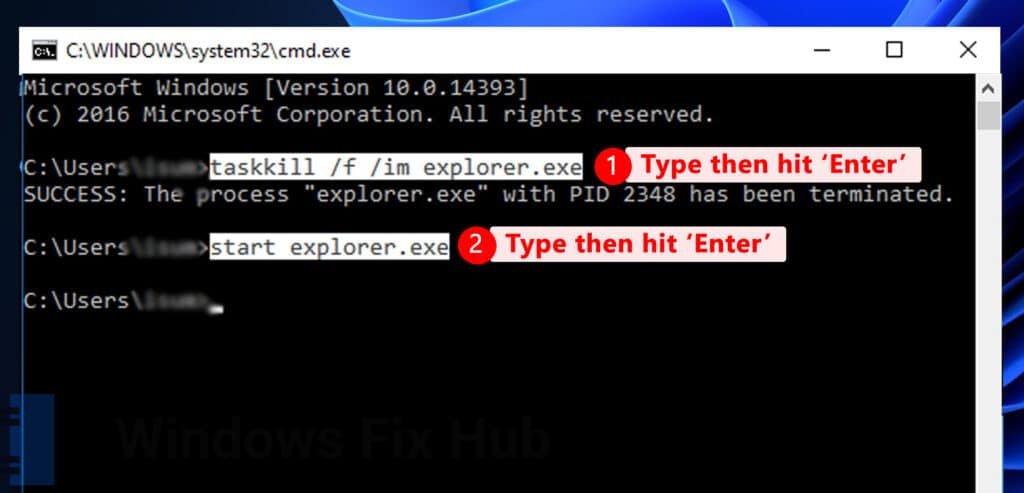
Was It Successfully Removed?
We certainly hope that by now your recycle bin icon is gone from your desktop.
You have achieved a great feat! You may now enjoy more screen ‘real estate’ and a more customized Windows experience thanks to your successful removal of the Recycle Bin icon from the desktop.
And if you like simple yet effective customizations, we recommend checking out how to enable ‘Dark Mode’ on your MS Word.
This little adjustment may greatly improve your everyday computer experience, whether you’re going for a minimalist look or just like a clean desk.
iobit Advanced System Care is used by millions of users worldwide.
It’s a “must-have” for every PC or MAC user who wants:
- To fix common PC errors automatically
- To speed up their computer performance
- To fully secure their device

